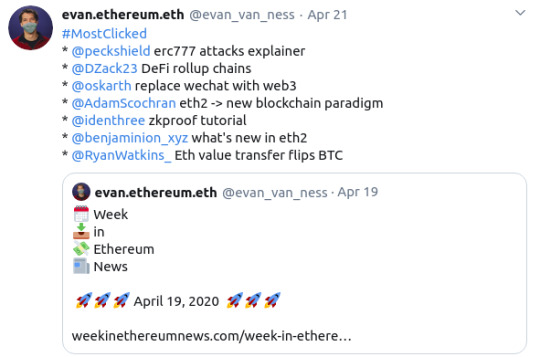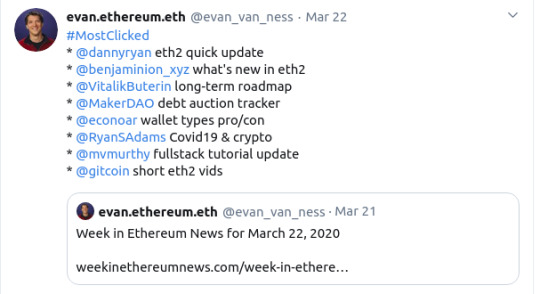#Short Term Business Loan in Austin
Explore tagged Tumblr posts
Text
Short Term Business Loan in Austin

What Is a Short-Term Business Loan and How Does It Work?
A short-term business loan is a financial product designed to provide businesses with quick access to funds that need to be repaid within a relatively short period, typically ranging from a few months to two years. Unlike long-term loans, which can last for several years or even decades, short-term business loan in Austin are structured to meet immediate financial needs such as managing cash flow, purchasing inventory, or addressing unexpected expenses.
These loans are offered by banks, credit unions, online lenders, and alternative financing companies like Biz2loan. The application process is often faster than traditional loans, with some lenders approving and disbursing funds in as little as 24 hours. Short-term business loans usually come with higher interest rates and smaller loan amounts compared to long-term loans. Repayment terms can involve daily, weekly, or monthly payments, depending on the lender’s policy.
Why Do We Need Short-Term Business Loans?
Short-term business loans serve as a lifeline for businesses facing temporary financial challenges or seeking opportunities that require immediate capital. Here are some scenarios where short-term business loans are essential:
Managing Cash Flow: Seasonal businesses or companies with fluctuating revenues can use short-term loans to bridge gaps in cash flow and meet operational expenses.
Seizing Growth Opportunities: When a sudden growth opportunity arises, like purchasing discounted inventory or investing in equipment—a short-term loan can provide the required funding.
Emergency Expenses: Unexpected costs, such as equipment repairs or unanticipated bills, can disrupt a business’s operations. A short-term loan helps cover these expenses without straining existing resources.
Building Credit: For newer businesses, short-term loans can serve as a steppingstone to building a strong credit history, making it easier to qualify for larger loans in the future.
What Are the Benefits of Taking Short-Term Business Loans?
Short-term business loans offer several advantages, making them a popular choice for small and medium-sized enterprises (SMEs). Here are some key benefits:
Quick Access to Funds: The approval and funding process for short-term loans is often streamlined, ensuring that businesses receive funds quickly when they need them the most.
Flexibility in Usage: Short-term loans can be used for a variety of purposes, from payroll and inventory purchases to marketing campaigns and operational improvements.
Improved Cash Flow Management: Businesses can address temporary cash flow shortages without affecting their day-to-day operations.
Minimal Long-Term Commitment: Since the repayment period is shorter, businesses can clear their debts quickly and avoid prolonged financial obligations.
Easier Qualification: Compared to long-term loans, short-term loans typically have less stringent eligibility criteria, making them accessible to a broader range of businesses.
Credit Building: Timely repayments of short-term loans can improve a business’s credit score, enhancing its ability to secure future financing.
Does a Short-Term Loan Make Sense to a Business?
The decision to take a short-term loan depends on the specific needs and circumstances of the business. Here are some factors to consider:
Purpose of the Loan: If the loan is intended to address an immediate financial need or take advantage of a time-sensitive opportunity, a short-term loan can be an ideal solution.
Repayment Capacity: Businesses should evaluate their cash flow and revenue projections to ensure they can comfortably meet the repayment obligations.
Cost of Borrowing: Short-term loans often come with higher interest rates. Businesses should weigh the cost of borrowing against the potential benefits or returns from using the loan.
Urgency: For situations that require immediate funding, short-term loans are often the quickest and most convenient option.
What Is the Difference Between Short-Term and Long-Term Commercial Loans?
Understanding the distinctions between short-term and long-term commercial loans can help businesses choose the right financing option:
Feature
Short-Term Loans
Long-Term Loans
Repayment Period
A few months to two years
Several years to decades
Loan Amount
Generally smaller amounts
Larger loan amounts
Interest Rates
Higher rates due to shorter terms
Lower rates over extended periods
Purpose
Immediate or short-term needs
Long-term investments
Approval Time
Faster approval and funding
Lengthy application and approval process
Repayment Frequency
Daily, weekly, or monthly
Monthly
Short-term loans are suitable for temporary needs and quick fixes, while long-term loans are better suited for substantial investments such as real estate, major equipment purchases, or business expansions.
How Does a Short-Term Loan Impact a Business’s Credit Score?
Taking a short-term loan can have both positive and negative impacts on a business’s credit score, depending on how it is managed:
Positive Impact:Timely Payments: Regular and on-time repayments can boost the business’s credit score, signaling financial responsibility to future lenders.Diversified Credit History: Successfully managing short-term loans adds variety to the credit profile, which can positively influence the score.
Negative Impact:Missed Payments: Late or missed payments can harm the credit score, making it harder to secure future financing.High Utilization: Taking on too many loans or utilizing a large portion of available credit can negatively affect the score.
To minimize risks, businesses should plan their repayment strategy carefully and avoid over-borrowing.
Conclusion
Short-term business loans are a powerful tool for businesses to address immediate financial needs, seize growth opportunities, and manage cash flow effectively. While these loans come with higher interest rates and shorter repayment terms, their quick accessibility and flexibility make them an indispensable option for many businesses.
At Biz2loan, we understand the unique financial challenges that businesses face and are committed to providing tailored short-term loan solutions. Our streamlined application process, competitive rates, and expert guidance ensure that your business gets the support it needs to thrive.
For more information about short-term business loans or applying, contact Biz2loan at (888) 204-9748 today!

0 notes
Text
Owning Multiple Second Homes: How Many Can You Legally Have?
Acquisition and ownership of second homes are interested today and are no longer limited to high economic profiles but are now becoming an emerging option among many families wanting to build a real estate portfolio, earn rental income, or enjoy multiple vacation trips. But how many second homes can you own? Though there's no fixed limit on the number of second homes owned, zoning laws, tax implications, and short-term rental regulations can affect ownership. Perhaps you plan to use your property for a vacation rental; contacting an Airbnb management company will ease the burden of management, from Austin to other top cities.

Understanding the Legal Aspects of Owning Multiple Second Homes
1. No Legal Cap on Second Home Ownership
In the United States, there isn't a federal law that restricts the number of second homes an individual may own. However, state, county, and municipal laws can affect the usage, maintenance, and even renting out of these properties on platforms like Airbnb.
2. Zoning and Local Regulations
Zoning ordinances applied to a parcel specifically set forth its ability for any specific type of use, whether residential or commercial. If you are using your second home for rental purposes as a short-term vacation rental, then that zoning law must be complied with. Some cities will have heavy restrictions or may even ban outright short-term rentals. For example, with short-term rentals having many rules in Austin, utilizing the services of an Austin Airbnb management company can keep you on the right side of the law.
3. Tax Implications of Owning Multiple Homes
Owning multiple second homes comes with tax obligations that differ depending on how the property is used:
Personal Use: If you do not rent out your second home, you may be eligible for mortgage interest deductions, similar to your primary residence.
Rental Property: If you rent out your property for more than 14 days a year, it is considered a rental business, and you must report the income to the IRS.
Capital Gains Tax: Selling a second home does not qualify for the primary residence capital gains exclusion, meaning you could face a higher tax bill when selling.
A tax professional can help you navigate these complexities, especially if you're earning rental income from your properties.
Maximizing the Value of Your Second Homes
1. Using Properties for Short-Term Rentals
Should you be buying these multiple second homes as an investment, listing them as short-term rentals can prove to be quite a lucrative business. However, managing several rental properties can be quite overwhelming. This is where an Airbnb management company in Austin or in your area of interest comes to play. They take care of everything, including marketing and guest communication, cleaning, and maintenance, allowing you to put all your energy toward expanding your real estate portfolio.
2. Diversifying Locations
When buying a number of secondary homes, make sure they are in different geographical positions. In fact, a beach house, mountain cabin, and urban apartment would attract different types of renters or travelers. Not only does it protect the investment, but it also helps to ensure consistent rental income all year round.
3. Financing Multiple Second Homes
Securing financing for multiple second homes can be challenging. Lenders typically require larger down payments and higher credit scores for additional properties. Some financing options include:
Conventional Loans: These require a higher down payment for second homes.
Portfolio Loans: Useful for investors who own multiple properties.
Home Equity Loans: Allows you to use existing home equity to fund new purchases.
Working with a financial advisor can help determine the best financing strategy for your situation.
Challenges of Owning Multiple Second Homes
1. Maintenance and Upkeep
The upkeep of various properties inevitably entails continual maintenance and repairs along with operational costs. Property managers or establishments managing Airbnb rentals in Austin could help relieve these organizations of some responsibilities to keep their homes in good condition.
2. Market Fluctuations
The real estate markets are very dynamic, so the prices of the properties can fluctuate according to the economic conditions. Diversified investments through the use of different locations or rental strategies may protect an investment from recession.
3. Legal and Compliance Issues
Every town and state has its own regulations regarding second homes and how they are rented. You have to keep up with all of those laws so that you will not incur any fines or restrictions later on that might affect your rental income.

Final Thoughts
It is quite possible to have many second homes, but owning them comes with responsibilities as well. While there is no legal limit to the number of homes one can have, it is crucial to know the local regulations, tax implications, and property management strategies. So, if you want to turn your properties into vacation rentals, teaming up with an Airbnb management company in Austin or anywhere else will help you navigate compliance and boost your profitability. Investing smart and keeping tabs on market fluctuations would let you effectively expand your real estate portfolio while enjoying passive income.
Looking for more insights? Our next blog will cover How to Clean a Bathroom Like a Pro: A Step-by-Step Guide. Check back soon!"
0 notes
Link
Taylor Swift is worth more than $300 million — see her bicoastal mansions, lavish vacations, and generous gifts to fans and friends
Hillary Hoffower August 19, 2018

Taylor Swift reportedly has a net worth of more than $300 million. Christopher Polk/Getty Images
Taylor Swift's net worth is currently an estimated $320 million, according to Forbes, making her one of the world's highest-paid celebrities.
Once Swift's Reputation Stadium Tour ends this fall, her net worth could climb even higher.
Swift spends her fortune growing her $84 million real estate portfolio and donating to causes and charity.
Taylor Swift never fails to impress.
At 15 years old, she was the youngest songwriter to ever sign with Sony. She now has 10 Grammys on her shelf, several tours under her belt (including one that generated a staggering quarter of a billion dollars), an endless list of chart-topping songs and albums, and a beloved fan base who dub themselves "Swifties."
Such success makes Swift one of the world's highest-paid celebrities and one of the richest female singers. According to Forbes, she has an estimated net worth of $320 million — and that's only expected to rise once her current six-month Reputation Stadium Tour wraps up later this year.
Swift has been strategic and generous with her money, investing in a sprawling $84 million real estate portfolio and often donating it to causes she supports and people in need.
Below, see how Swift earns and spends her fortune.
Taylor Swift currently has an estimated net worth of $320 million, which has grown due to her music, merchandise, and endorsements.

Kevork Djansezian/Getty Images
Source: Forbes
Ever the superstar, Swift's endorsement deals and partnerships are with high-profile brands, including Keds, Diet Coke, CoverGirl, and Apple, which bring in a lot of income.

Charley Gallay/Getty Images
Source:Money
Swift has had a long-term partnership with Diet Coke since 2013, which has involved her chatting about her love for the drink in a "Bon Appetit" interview and holding the drink while on camera.

Anna Webber/Shutterstock
Source:Hollywood Reporter, Variety
Adele and Madonna, who have comparable fan bases to Swift, didn't put as much effort into brand partnerships and touring as Swift did in 2016 — and only made half of her paycheck, at $80.5 million and $76.5 million respectively, according to Quartz.

Sascha Schuermann/Getty Images
Source:Quartz
In fact, aside from brand partnerships and endorsements, touring is Swift's biggest money maker. Her 1989 tour grossed more than $250 million in 2015.

Graham Denholm/Shutterstock
Source: Forbes
She stands to earn even more than that during her current six-month Reputation Stadium Tour that began in May. Five shows in, Swift had already earned $54 million in sales — that's $10.8 million per show.

Kevin Winter/Getty Images
Source: Forbes, Refinery29
But her tours don't just bring in ticket sales. Billboard estimated that Swift sells $17 of merchandise per ticket at her shows.

Andreas Rentz/Getty Images
Source:Billboard
Swift was the world's top-earning musician in June 2016, bringing home a record $170 million from 2015-2016, according to Forbes' 2016 list. The same year, it was estimated that Swift makes $1 million a day.

Evan Agostini/AP Photos
Source:Forbes,Express
Swift had a more "quiet year" in 2017, according to Forbes, bringing in $44 million and ranking ninth on Forbes' list of the world's highest-paid celebrities.

Rich Polk/Getty Images
Source:Forbes
So far in 2018, not including touring revenues, Swift has earned an estimated $5 million in record sales, $2.4 million through streaming, and $2 million in publishing royalties, according to Billboard.

Chris Pizzello/Shutterstock
Source:Billboard
A few years ago, it was estimated Swift could become a billionaire by the time she turns 30. Here's how she spends her fortune...

Carlo Allegri/Reuters
Source:Express
Swift is a real estate mogul, with a sprawling $84 million real estate portfolio that consists of eight properties in four different states, according to property values estimated by Trulia.

Jordan Strauss/AP Photos
Source: Business Insider, Trulia
In Nashville, she owns a 3,240-square-foot condo worth an estimated $3 million and a 5,600-square-foot Greek Revival estate worth an estimated $2.5 million. The latter is the cheapest property she owns.

Google Maps
Source: Business Insider, Trulia
In LA, Swift currently has a Beverly Hills home on the market for $2.85 million. She also owns a 10,982 square-foot Beverly Hills mansion worth nearly $30 million. She plans to turn it into a historic landmark.

From Trulia
Source: Business Insider, Trulia
Across the coast, Swift owns an estate with seaside views in Watch Hill, Rhode Island, valued at $6.65 million. With 12,000 square feet, it has plenty of room for parties with her squad.

Zillow
Source: Business Insider, Trulia
But that's nothing compared to the estimated $40 million worth of property Swift owns in New York City on the same block in Tribeca. That includes a 8,309-square-foot large duplex penthouse and a four-story townhouse.

Taylor Swift bought this townhouse last year located at 153 Franklin St. It's next to a complex where she now owns three units. Google Maps
Source: Business Insider, Trulia
Swift needs a way to travel among all these homes and she's rumored to own two Dassault private jets. There's no word on how much she paid for them, but depending on the model, they can be worth up to $58 million each.

Andrew H. Walker/Getty
Source: Forbes, GOBankingRates
Swift can also use her jet to head out of the country for vacation. She recently spent the Fourth of July in Turks and Caicos with her boyfriend Joe Alwyn and previously took a trip to an undisclosed tropical island with former boyfriend Calvin Harris.

Debbie Ann Powell/Shutterstock
Source:Elle, Travel + Leisure
At the end of her 1989 World Tour, Swift took her 125-person band and crew on a vacation in Australia.

Michael Loccisano/Getty Images
Source: Vanity Fair
But Swift has always been generous with her money, supporting causes and helping those in need. On her 24th birthday, she donated $100,000 to the Nashville Symphony.

Royce DeGrie/Getty Images
Source: People
She's provided supported during natural disasters, donating $1 million to the victims of Louisiana floods and $500,000 to the Nashville flood relief, and raising $750,000 through a Speak Now Help Now benefit concert for victims of tornadoes in the southern US in 2011.

Caroline McCredie/Getty Images
Source: People
Swift is also supportive of education — she pledged $4 million to the Country Music Hall of Fame to fund the Taylor Swift Education Center and donated $50,000 to NYC public schools.

Larry Busacca/Getty Images
Source: People
She's also donated to various GoFundMe campaigns, including $10,000 toward a service dog for an autistic boy and $50,000 to her backup dancer's nephew, who was battling cancer.

Mark Humphrey/Getty Images
Source: People
And then there are the two famous checks she wrote for $1,989 — an ode to her best-selling album — sent to two fans to pay a student loan and to donate to a dance marathon benefit.

Larry Busacca/Getty Images
Source: People
She also helps out her friends, giving pal Kesha $250,000 to help with legal fees during her lawsuit against a music producer.

Kevin Winter/Getty Images
Source:People
But her thoughtfulness doesn't end there. And when she once went out to dinner with pals Ed Sheeran and Austin Mahone in Philadelphia, she reportedly left a generous $500 tip.

Christopher Polk/Getty Images
Source:E News
Swift often spends money dining out with her squad and boyfriends, especially when in New York City, where she's dined at The Fat Radish, The Spotted Pig, Sarabeth's, and L'Asso, where she had a glass of wine and a gluten-free pizza.

KGC-146/STAR MAX/IPx/Getty Images
Source:People
But Swift also saves money dining in. She reportedly loves to cook and bake and has hosted several elaborate dinner parties with her squad.

Jason Merritt/Getty Images
Source:Glamour, InStyle
Swift also has a fur squad. She has two Scottish Fold cats, Meredith Grey and Olivia Benson. The breed costs around $1,000 to $1,500. Her cats even have their own line of merchandise at her store.

Evan Agostini/Shutterstock
Source:Refinery 29, Cat Breeds List
When she's not chilling at home, Swift is usually rocking designer duds during appearances or some serious street style in New York City, often mixing high-end and fast fashion. She's been spotted wearing Saint Laurent sneakers, A Christian Louboutin backpack for $1,237, and an Elie Saab gown.

Michael Loccisano/Getty Images
Source:Who What Wear
But Swift's also sported more affordable pieces, such as $60 Steve Madden sandals and Gen Z-obsession Brandy Melville. She seems to have an affinity for Madewell, whose clothes range around $72 for a pair of shorts or $62 for a denim crop top.

KGC-146/STAR MAX/IPx/AP Photos
Source:Who What Wear, Who What Wear, People
But for all the generous giving and strategic investments Swift has made with her money, she has reportedly used it in one rumored indulgence: $40 million to insure her famous legs.

Andreas Rentz /Getty Images
Source:New York Post
Business Insider
46 notes
·
View notes
Video
tumblr
We are a Nationally Recognized Financial Company Serving all of our Client’s Business Lending Needs. Here at Fund Business Loans, with our expertise as a Small Business Lender, We Syndicate and have Partnerships with National Lenders. We can Provide all of your Business Loan, Finance and Lease Needs. There are a Variety of Business Loans available from Term Loans, SBA loans, to Business Lines of Credit and Business Working Capital. Most Loan types come with Minimum Requirements that Borrowers need to Meet in Order to be Eligible to Apply for the Loan. Plus, They all come with their Own Requirements for Documents you’ll Need to have in order to Apply and Get Approved.
FBL Small Business Loans Austin TX and nearby cities Provide Small Business Loans, SBA Business Loans, Business Startup Loans, Business Acquisition Loans, Accounts Receivable Financing, Short Term Loans, Business Loans, Lines of Credit, Invoice Factoring, Cash Advances, Commercial Equipment Financing, Used Equipment Financing, Commercial Real Estate Loans, Commercial Title Loans
Contact Us: FBL Small Business Loans Austin TX 11105 N Interstate Hwy 35. # D Austin, TX 78753 Phone: 737-295-2209 Email: [email protected] Website: https://fundbusinessloans.com/small-business-financing-austin-tx
#Used Equipment Financing#Commercial Equipment Financing#Cash Advances#Invoice Factoring#Lines of Credit
0 notes
Photo

New Post has been published on https://coinprojects.net/infrastructure-bill-passes-coinbase-posts-1-6-billion-in-q2-profit-600-million-stolen-in-defi-hack-hodlers-digest-aug-8-14/
Infrastructure bill passes, Coinbase posts $1.6 billion in Q2 profit, $600 million stolen in DeFi hack: Hodler’s Digest, Aug.8-14
Coming every Saturday, Hodler’s Digest will help you track every single important news story that happened this week. The best (and worst) quotes, adoption and regulation highlights, leading coins, predictions and much more — a week on Cointelegraph in one link.
Top Stories This Week
Infrastructure bill passes US Senate — without clarification on crypto
On Tuesday, the controversial infrastructure bill passed in the U.S. senate In a 69-30 vote.
The bipartisan bill proposes roughly $1 trillion of funding into transportation and electricity infrastructure projects. The bill also puts forward more stringent rules for firms handling crypto assets while expanding reporting requirements for brokers, who will be required to report digital asset transactions worth more than $10,000 to the IRS.
Six senators, including Pat Toomey, Cynthia Lummis, Rob Portman, Mark Warner, Kyrsten Sinema and Ron Wyden, proposed an amendment to the buzz-kill bill on Monday that would exempt software developers, transaction validators and node operators as brokers, while proposing that tax reporting requirements “only apply to the intermediaries.”
Their efforts didn’t bear fruit, however, with further clarification on crypto not provided. Senator Toomey flamed the bill in the aftermath, noting that the legislation was “too expensive, too expansive, too unpaid for and too threatening to the innovative cryptocurrency economy.”
Poloniex settles charges with SEC for operating unregistered exchange
The United States Securities and Exchange Commission, or SEC, announced a $10 million settlement with cryptocurrency exchange Poloniex on Aug. 9.
Poloniex was charged with facilitating trades in unregistered securities between July 2017 and November 2019. According to the indictment, the SEC also asserted that Poloniex employees were misbehaving, as they actively sought to circumvent securities regulation in a plot to increase the company’s market share.
On the same day, SEC commissioner Hester Peirce — known colloquially as “Crypto Mom” due to her regular pushback against SEC crypto enforcement — slammed the regulators’ actions in a public statement.
Crypto Mom questioned the regulators’ opaque regulatory framework that crypto firms must navigate in the U.S. while asserting that, even if Poloniex had tried to register with the SEC,
they “likely would have waited…and waited…and waited some more” for a verdict.
Coinbase’s Q2 profits top $1.6B as ETH volume surpasses BTC’s for the first time
Coinbase, the crypto exchange led by media-shy co-founder and CEO Brian Armstrong, posted Q2 profits of $1.6 billion this week.
The firm released its Q2 report on Tuesday, and its net profit of $1.6 billion marked a mammoth increase of 4,900% compared to the $32 million recorded in the same period of 2020. Coinbase’s total revenue for the quarter was $2.23 billion, beating out analysts’ predictions of $1.78 billion in expected revenue.
Interestingly, for the first time since Coinbase was founded nine years ago, Ethereum (ETH) had a higher trading volume than Bitcoin (BTC), with the assets representing 26% and 24% of total volume, respectively.
55% of the world’s top 100 banks reportedly have crypto and blockchain exposure
Despite banks often taking time out of their busy schedules to slam crypto, a new research report found that 55 out of the top 100 banks by assets under management have some form of blockchain or crypto exposure.
According to research by Blockdata, the banks and their subsidiaries have direct and indirect investments in crypto and decentralized ledger technology firms.
Notable banking giants named and shamed included Barclays, Citigroup and Goldman Sachs, who were reported as the most active backers of crypto and blockchain firms, while JPMorgan Chase and BNP Paribas were also identified as serial investors in the sector.
Winners and Losers
At the end of the week, Bitcoin is at $46,262, Ether at $3,189 and XRP at $1.01. The total market cap is at $1.92 trillion, according to CoinMarketCap.
Among the biggest 100 cryptocurrencies, the top three altcoin gainers of the week are IoTeX (IOTX) at 314.69%, XinFin Network (XDC) at 71.34%, and Ravencoin (RVN) at 71.23%.
The top three altcoin losers of the week are THORChain (RUNE) at -12.02%, Quant (QNT) at -5.71%, and THETA (THETA) at -2.58%.
For more info on crypto prices, make sure to read Cointelegraph’s market analysis.
Most Memorable Quotations
“If #Bitcoin were to catch up to #Ethereum’s performance this year, the No. 1 crypto’s price would approach $100,000.”
Mike McGlone, senior commodity strategist for Bloomberg Intelligence
“Shutting off this growth engine would be the equivalent of stopping e-commerce in 1995 because people were afraid of credit card fraud. Or regulating the creation of websites because some people initially thought they were complicated and didn’t understand what they would ever amount to.”
Mark Cuban, billionaire investor
“If you want to store your coins truly outside of the reach of the state, you can just hold those private keys directly. That’s the equivalent of burying a bar of gold in your backyard.”
Nic Carter, co-founder of Coin Metrics
“This legislation imposes a badly flawed, and in some cases unworkable, cryptocurrency tax reporting mandate that threatens future technological innovation.”
Pat Toomey, U.S. Senator
“I think we’re already past the stage of crypto early adoption.”
Stephen Stonberg, Bittrex Global CEO
“We are living in a time where everything is going digital, including traditional assets.”
Austin Woodward, CEO of TaxBit
“Given how slow we have been in determining how regulated entities can interact with crypto, market participants may understandably be surprised to see us come onto the scene now with our enforcement guns blazing and argue that Poloniex was not registered or operating under an exemption as it should have been.”
Hester Peirce, commissioner of the U.S. Securities and Exchange Commission
“Bitcoin’s journey to becoming Gold 2.0 has been beautiful.”
Dan Held, Kraken director of growth marketing
Prediction of the Week
Bitcoin Technicals: Why BTC price breaking $48K resistance is the key to new all-time highs
Bitcoin has recovered a notable amount of ground in recent weeks. The asset hit its all-time high of almost $65,000 back in April but subsequently fell in the days and weeks after, finding its way down to around $30,000. On multiple occasions, the asset briefly fell below $30,000.
Recent weeks, however, have shown bullish price movement for Bitcoin, as the asset has posted chart action seemingly indicative of a reversal, based on analysis from Cointelegraph’s Michaël van de Poppe.
The $48,000 price range on Bitcoin’s chart sits as notable resistance. A move past the price zone of $47,500 to $49,000 could signal a possible further move up to eventual fresh all-time highs, although van de Poppe noted $55,000 as a nearer-term target following a break of the mentioned resistance zone. Alternatively, should Bitcoin’s price break down, a number of levels of price support exist, with $37,500 as an important level to hold.
FUD of the Week
Coinbase removes ‘backed by US dollars’ claim for USDC stablecoin
Earlier this week Coinbase tweaked its description of number-two stablecoin USD Coin (USDC) to paint a picture of a slightly less-than-stable coin.
Coinbase made the change following an audit showing that USDC’s reserves weren’t all held in cash. The previous statement read: “Each USDC is backed by one dollar held in a bank account.”
The new statement reads: “Each USDC is backed by one dollar or asset with equivalent fair value, which is held in accounts with US regulated financial institutions.”
While this might be a blow to USDC owners Circle, the firm’s stablecoin cash reserves are likely larger than Tether’s and its USDT.
Alex Saunders sued for $350K by Nuggets News follower
Alex Saunders, the Aussie behind popular crypto YouTube channel Nuggets News, is being sued by a disgruntled investor for almost 479,270 Australian dollars, worth roughly $353,027.
Plaintiff Ziv Himmelfarb filed a formal written order demanding that the YouTuber pay the amount in losses and damages for unpaid loans and allegedly bogus investments.
Himmelfarb stated that it was a “no-brainer” to trust Saunders when he was asked for loans and offered investment opportunities by the crypto influencer, as he had been following him since 2017 and found him to be a reputable figure in the space.
“When he told me he had temporary liquidity issues in May, I was glad to help with a short-term loan, but couldn’t get any of my money back since then. Hopefully I can get repaid,” Himmelfarb said in regard to his alleged 30 ETH loan to Saunders.
DAO Maker crowdfunding platform loses $7M in latest DeFi exploit
DAO Maker, a crowdfunding platform focused on raising money for crypto projects, was exploited by hackers who stole $7 million worth of USDC out of 5,251 user accounts.
According to DAO Maker CEO Christoph Zaknun, the hackers were able to syphon around $7 million worth of USDC.
“One of the reasons why this did happen is probably that the amount of deposits within the [Strong Holder Offering] contract really exceeded our expectations,” said Zaknun in an AMA on Twitch. “Initially, we never expected more than $2.5 million to be deposited in there, but over time, the SHOs became very popular.”
Cointelegraph didn’t reach out to the hackers to provide comments, as nobody knows who they are.
Best Cointelegraph Features
Large hodlers accumulate Bitcoin below $50K as BTC transactions over $1M soar
The dominance of Bitcoin transaction values above $1 million has doubled year-over-year, hinting at a rising institutional involvement in the cryptocurrency space.
Is the cryptocurrency epicenter moving away from East Asia?
East Asia has experienced a major decline in crypto adoption over the past year when compared with other regions.
Measuring success: Offsetting crypto carbon emissions necessary for adoption?
Crypto companies are doing their best to go green by offsetting Bitcoin carbon emissions, but how accurate are their estimates?
Source link By Cointelegraph By Editorial Staff
#AltcoinNews #Bitcoin #BitcoinNews #BlockchainNews #Coinbase #CoinbaseNews #CryptoNews #WeeklyUpdate
#altcoinNews#Bitcoin#BitcoinNews#BlockchainNews#Coinbase#coinbaseNews#CryptoNews#WeeklyUpdate#CryptoPress#Weekly Overview
0 notes
Text
ABA Therapist / RBT / Behavior Therapist
At our Litchfield Park location near Phoenix, Arizona, Action Behavior Centers – ABA Therapy for Autism is hiring experienced and entry-level Behavior Therapists (BTs) and Registered Behavior Technicians (RBTs) to join our team while offering the sort of compensation and culture that applicants can’t find anywhere else. All our BTs become RBTs within their first 45 days and provide therapy based upon the principles of Applied Behavior Analysis to children with Autism and related developmental disabilities in a clinic-based setting.
You will implement world-class behavior modification programs through one-on-one therapy, collect data electronically, assist with parent training, and coordinate with other team members to offer an incredibly valuable service to our clients and families. About Action Behavior Centers: Action Behavior is a dynamic provider of ABA therapy services founded in Austin, Texas.
Started by experienced, successful entrepreneurs and clinically-rigorous and friendly Board Certified Behavior Analysts, Action Behavior offers a superior career opportunity to behavioral health practitioners.
Each team member at ABC has a commitment to excellence in our work. Requirements: Experience working 1:1 with children and/or in the field of Applied Behavior Analysis – ideally you already are a Registered Behavior Technician and/or have extensive childcare experience Must LOVE working with children 10 and under with ASD Must be able to lift up to 30 pounds Must be able to assume and maintain a variety of postures (kneeling, squatting, crawling, sitting, standing) for extended periods of time.
Must be able to sit on the floor or stand for extended periods of time.
Must be able to receive detailed information through oral and written communication.
Must have reliable transportation, a valid Arizona Driver’s license, and be able to show up on time and ready to go to work every day!
We have great little clients and families that depend on us, and absenteeism isn’t possible!
Education: College degree in any field preferred.
Pursuit of undergraduate degree required. Training: We will provide training to our behavior therapists, even if you are already certified.
We have high standards. Compensation: All Positions Are Full-Time with Guaranteed Hours BTs: Training, coaching, and continued education assistance to new and experienced staff Professional development and extensive growth opportunities Health benefits from day one of employment Paid time off (10 days of PTO + 2 day of flex PTO + 12 days of paid holidays) Annual bonus (up to $2,000) + annual merit-based raises Short Term disability Pet insurance and life insurance options Student loan reimbursement program (up to $600 a year) Tuition assistance program for 4 leading online ABA programs Maternity/Paternity bonus 401K + 2% match 30 hours guaranteed each week minimum After-work voluntary team events Free lunch Fridays and themed Fridays!
Management that is responsive, supportive, and promotes a strong company culture A fun work environment that is based on positive reinforcement and culture formation BT/RBT Hourly Range between $14.42-$20.26/hr depending on the level of experience. To apply: Please share your current RESUME and a COVER LETTER helping us get to know you and why you believe yourself to be a fit within our organization and to help our children.
Please no phone calls at this time as our centers are very busy serving clients and families.
We will reach out directly to any candidates with whom we would like to schedule an interview.

Job Type: Full-time Powered by JazzHR Cw8TR4ySjd
The post ABA Therapist / RBT / Behavior Therapist first appeared on Valley of the Sun Jobs. source https://valleyofthesunjobs.com/healthcare/aba-therapist-rbt-behavior-therapist-7aa0fd/?utm_source=rss&utm_medium=rss&utm_campaign=aba-therapist-rbt-behavior-therapist-7aa0fd
0 notes
Text
Small Business Loan Options in Texas
Did you know that there are 2.8 million small businesses in Texas? Or that these small businesses employ 4.8 million people? Texas is a fantastic place to start or grow a business, whether you are in Austin, Dallas, Houston, or one of the hundreds of other cities in the Lone Star State … but not without a little help. Here is what you need to know about small business loans in Texas.
How A Loan Can Help Your Texas Small Business
When I say “help” I am referring to small business loans, which can be useful in many ways. They can help you buy what your business needs to run on a day-to-day basis and make sure you have enough cash flow to survive slow times in your business.
Taking out a business loan can also help you build and expand your business loan, as long as you pay your monthly installment on time each month.
Find the right financing for you
Don’t waste hours looking for and applying for loans you don’t stand a chance – get matched today based on your business and credit profile.
See my games
Small business credit options in Texas
When it comes to corporate finance, you have several options. Some you may qualify for, especially if you have good credit, while others may offer you finance at higher rates.
COVID-19 pandemic loans
In addition to two federal loan programs, the Paycheck Protection Program (PPP) and the Economic Injury Disaster Loan (EIDL) program, Texas has several COVID-19 grant and small business loan programs, including loans from PeopleFund and various city governments. Check the links for the latest information.
Bank loan
If your credit rating is excellent, you can qualify for a long term loan with loan interest rates from a bank or credit union.
SBA loan
The US Small Business Administration also offers low-interest loans like the 7 (a) loan or SBA 504 loan that can be used for things like business expenses, equipment, and commercial real estate. Learn more at SBA.gov.
Credit lines
When you need access to capital but don’t want to have it all (and don’t have to pay back everything at once), business lines of credit can fill the bill. Borrow from what you are approved for and only pay back that amount.
Equipment financing
If you are using equipment like computers, heavy machinery, or even company cars, there are certain equipment loans that you may want to explore. The devices you buy act as collateral that can bring interest rates down.
Credit cards
Having business credit cards to make purchases for your business can come in handy even when you run out of cash in the bank. Withdraw your balance in full to avoid interest fees and look for a card with rewards to earn on your purchases.
Short-term loan
But what if you don’t qualify for any of the above options, maybe because your business is new or you don’t have good credit? You can still qualify for short-term loans, but know that these tend to have higher interest rates.
How To Choose The Right Loan For Your Texas Business
Start with your fitness. Which financing options do you qualify for? Ideally, apply for the lowest interest rate loan to minimize the additional fees you pay.
Also, think about how you plan to use the funds. Some loans, particularly SBA loans, may have specific loan proceeds use requirements, and there are loans such as equipment finance that are designed for specific purchases.
How To Qualify For A Texas Business Loan
Financial institutions may have slightly different criteria for qualifying for a business loan, but in general you can expect them to look at how long you’ve been in business, your credit history, and your annual sales.
New businesses may struggle to qualify for bank or SBA loans as they typically approve applications from companies that have been in business for two or more years. A better option for a startup might be a business credit card or a short-term loan.
The higher your credit score, both personal and business, the better the deals you will qualify for. More on the subject of creditworthiness in the next section.
What is a Good Credit Score for Getting a Texas Business Loan?
Each lender has their own set of criteria for the credit scores required for small business finance. The SBA doesn’t have a published minimum credit requirement, however, but many lenders require a personal credit score of at least 640.
Some lenders may also check if you have business credit, which not all companies do. If you don’t have them, learn how to set up a business loan to expand your options.
And remember: even with bad credit, there are credit options for you, albeit at a higher cost.

Find out which financing options you qualify for
Get personalized credit and credit card reconciliations and access to your business credit report when you sign up for a free Nav account. The check won’t harm your creditworthiness.
Registration
How To Get A Small Business Loan In Texas
Lenders may differ in their application process but expect to be asked for details about your business, how long it has been in operation, your annual income, etc. And since you may be personally guaranteeing the loan, you may need to provide personal information such as your social security number specify.
After you are approved for a loan, review the loan terms, which details the loan amount, interest rate, and repayment schedule. Sign the agreement and the money should be deposited into your business account in less than a business day.
Ways To Use A Small Business Loan In Texas
The uses of corporate finance are as diverse as the small business owners applying for finance.
If you have slow phases in your business, you may just want to access working capital so your bank account never goes empty. If you want to expand, a loan can be used to purchase commercial real estate and renovate new retail space. You could use the funds to purchase larger inventory so you could save per unit.
An equipment loan could be used to purchase updated equipment that will help serve more customers or speed up your production line. You could use the funds to hire more help to relieve yourself a little.
A small loan for your Texas business can and should help take your business to a new level!
This article was originally written July 8, 2021.
Rate this article
This article has no ratings yet.
class = “blarg”>
source https://www.cassh24sg.com/2021/07/10/small-business-loan-options-in-texas/
0 notes
Text
Hard Money Austin – The Flexible Way To Get A Loan For Investment

Most of the real estate investors find it difficult to get the loan for their real estate investments. Not everyone in the real estate industry gets qualify to get a traditional loan. The bank and other financial institution verify the client’s credit history and background before lending the loan. This makes the loan approval delay and the person with a bad credit history will not be able to get the loan. But this is not the end since there are alternative ways through which you can get the loan. The most effective way of getting the required amount is by using the hard money Austin.
The hard money lenders will not check your creditworthiness and lend the money. They provide the money based on the real estate property used as the collateral. The Corridor funding is an effective way through one can get the hard money loan. The hard money lenders don’t use the traditional loan process since they make the process simpler and easier to get the loan for the real estate investment.
Is it easy to find the hard money Austin lenders?
If you have got a good opportunity which will help in developing your business? Then you approach the best Hard Money Austin lenders so that you can build wealth and improve your business. However, it is important to understand that there are many private money lenders who provide the loan for the investment. Hence you must find the best Corridor funding which is reliable. You can find it with the help of proper research about the lenders near you.
A hard money loan is a form of short-term loan which can be used for any real estate investment. Unlike the bank and financial institutions who look for the credit score, the hard money lenders focus on the one or more real estate property used as the collateral to get the loan. This method is used by the lenders so that they can resell the property to recoup the money. The best thing about the Corridor funding is that you can get any amount as the loan if you have the real estate property which can be used as the collateral.
The lenders provide convenience in getting the loan and repayment so that any real estate investors can use the service. Also, they do not focus on more paperwork. Hence the approval or closing of the loan can be done quickly typically in less than a week or two. Thus, this makes the easiest choice to get the loan for utilizing any good real estate opportunity. Using the hard money lenders services also provide many other benefits like flexibility, customized repayment options and so on.
Hence if you can't get the loan for the real estate investment through the traditional method then you can get the loan from the hard money Austin lenders. You can also close the existing loan and take a new loan easily for your new project.
#hard money austin#hard money lending#hard money lenders near me#hard money construction loans#private money loans
0 notes
Text
KBRA Assigns Preliminary Ratings to Prodigy Finance International Student Loan Securitisation
LONDON–(BUSINESS WIRE) – Kroll Bond Rating Agency UK Limited (KBRA) issues preliminary ratings to Prodigy Finance CM 2021-1 DAC and Prodigy Finance CM2021-1 LLC (together “Prodigy 2021-1” or the “Issuers”) securitization of 303.5 million . USD for unsecured international student loans provided by Prodigy Finance Limited (“Prodigy”, the “Company” or the “Service Provider”). This transaction is Prodigy’s first valued securitization backed by international private student loans. Prodigy 2021-1 will issue Class A, Class B, Class C, Class D and Class R Notes (collectively the “Notes”).
Prodigy is a London-based student loan lender that began lending to graduate students at INSEAD, a private school in France, in 2007. In 2011, Prodigy expanded its offering to students in other European schools, and in 2014 began lending to international students participating in postgraduate programs in the United States.
As of June 7, 2021, the Prodigy 2021-1 collateral pool includes $ 8,048-based loans to 6,037 borrowers with an average loan size of $ 37,705, an average exposure per borrower of $ 50,265, weighted average margin of 6, 6% above the variable base rate, which results in a weighted average current interest rate of 6.7% and a weighted average remaining term of 12.9 years. Indian citizenship borrowers make up 44.4% of the pool, and the next largest concentrations are Brazil with 9.7% and China with 5.3%. Prodigy estimates that 62.2% of borrowers who are in the repayment phase currently reside in the United States. 84.8% of the pool are loans to finance graduate courses in the United States.
Click here to view the report. To access reviews and relevant documents, click here.
Related publications
Disclosure Learn more about key credit considerations, sensitivity studies that take into account what factors may affect these credit ratings and how they could lead to an upgrade or downgrade, and ESG factors (if they are a significant factor in changing the credit rating or the rating outlook) can be found in the full rating report listed above.
A description of all material material sources used in establishing the credit rating and information on the methodology (s) (including any material models and sensitivity analyzes of the relevant material rating assumptions, if any) that were used in determining the credit rating is available in the information disclosure forms here.
Information on the meaning of the individual assessment categories can be found here.
This credit rating is confirmed by Kroll Bond Rating Agency Europe Limited for use in the European Union. Information on the confirmation status of a credit rating is available on its rating page at KBRA.com.
Further information on this rating measure can be found in the information disclosure forms mentioned above. Further information on KBRA policies, methods, rating scales and information is available at www.kbra.com.
About KBRA UK Kroll Bond Rating Agency, LLC (KBRA) is a full-service credit rating agency registered as an NRSRO with the Securities and Exchange Commission. Kroll Bond Rating Agency Europe Limited is registered as a CRA with the European Securities and Markets Authority. Kroll Bond Rating Agency UK Limited is registered with the UK Financial Conduct Authority as a CRA under the temporary registration system. In addition, KBRA has been named by the Ontario Securities Commission as the designated rating organization for issuers of asset-backed securities for the submission of a short prospectus or shelf prospectus. KBRA is also recognized as a credit rating provider by the National Association of Insurance Commissioners. Kroll Bond Rating Agency UK is based in Augustine House, Austin Friars, London, EC2N 2HA, United Kingdom.
source https://www.cassh24sg.com/2021/07/07/kbra-assigns-preliminary-ratings-to-prodigy-finance-international-student-loan-securitisation/
1 note
·
View note
Text
Small businesses have received uneven relief from COVID-19 federal aid
Register at https://mignation.com The Only Social Network for Migrants. #Immigration, #Migration, #Mignation ---
New Post has been published on http://khalilhumam.com/small-businesses-have-received-uneven-relief-from-covid-19-federal-aid/
Small businesses have received uneven relief from COVID-19 federal aid

By Sifan Liu, Joseph Parilla On May 28, the U.S. House of Representatives passed the Paycheck Protection Program Flexibility Act, which aims to modify the $660 billion Paycheck Protection Program (PPP) to make loans more accessible and flexible for the nation’s struggling small business sector. After a surge in demand for PPP loans in the program’s first several weeks, both the number and volume of loans has flatlined since May 8, with over 40% of the program’s second funding tranche still available. The PPP Flexibility Act would extend the loan forgiveness period from eight weeks to 24 weeks, extend the June 30 hiring deadline to receive forgiveness, and allow for greater flexibility to include nonpayroll expenses in forgiveness. These reforms reflect how many small businesses are not applying due to lack of guidance or concerns that they will not be able to get their loan forgiven. Even for those who did apply, many are still waiting. Using data from the U.S. Census Bureau’s Small Business Pulse Survey, this post examines trends across the nation’s 50 largest metropolitan areas on two of the key dimensions for making the PPP successful for any local community: (1) maximizing applications through effective outreach and guidance, and (2) delivering the relief to businesses as fast as possible.
Business closure rates and PPP application rates vary across major metro areas
The intensity of the small business crisis differs across geography due to the varying severity of the pandemic, levels of lockdown orders, and industry exposure. To get a sense of the regional demand for small business liquidity relief, we use the share of surveyed small businesses that reported revenue loss from COVID-19. Nationwide, 66% of surveyed small businesses experienced a revenue loss from April 26 to May 23, but that varied among the 50 largest metro areas—from 74% of small businesses in Buffalo, N.Y. to 58% of small businesses in Jacksonville, Fla. and Salt Lake City (Chart 1).

In general, a metro area with more revenue loss will have a higher PPP application rate—but there are some notable exceptions. Fewer than 70% of small businesses in New Orleans, Miami, and Providence, R.I. have applied for PPP assistance, even though small businesses there experienced above-average revenue loss. In the upper left portion of Chart 1, Midwestern and Southern metro areas had below-average revenue loss but some of the nation’s highest shares of PPP applications, led by Memphis, Tenn., Columbus, Ohio, Austin, Texas, and Virginia Beach, Va.
The race to deliver liquidity relief
If applying to the PPP is the first step in stabilizing the sector, processing loans to local small businesses is the second. In general, PPP processing rates in most large metro areas had stabilized at around 90% by May 23 (Chart 2), meaning that for every 10 businesses that said they applied to the program, around nine had received their loan. As these rates approach 100%, it underscores the importance of increasing accessibility to broaden the base of applying businesses now that application backlogs are cleared. But the uneven progress in earlier weeks is still concerning. By May 2, one month after the PPP’s launch, only 50% of small businesses that applied had received their loan. Again, this varied by metro area: In Minneapolis, Oklahoma City, Okla., Kansas City, Mo., and Birmingham, Ala., about 70% of small businesses that applied had received PPP loans. At the same time, small businesses in the bottom five metro areas—all located in California—only saw 30% of their PPP applications processed by May 2.

This lag matters because it may indicate where small businesses have already gone under. By early May, small businesses had been forced to withstand about six weeks of stay-at-home orders, which means that the PPP processing rate in early May is critical because that was the point when many small businesses were about to run out of cash. Nationwide, 54% of small businesses indicated that they had less than four weeks of cash flow on hand in early May, ranging from 68% in Buffalo to 38% in Columbus (Chart 3). Small businesses in New York, Riverside, Calif., and Hartford, Conn. were particularly short on cash, and the low PPP processing rates in those metro areas in early May mean those small businesses might not have received the essential assistance in time.

Three actions to support local small business stabilization efforts
These findings underscore that the small business crisis is widespread but locally differentiated in its severity and response, and point to three main takeaways for policymakers. First, banks, credit unions, community development financial institutions (CDFIs), economic development groups, local government leaders, and small business owners understand how the nation’s relief strategy is playing out on the ground, and can be a powerful and practical advocate for needed changes. While the PPP is far from perfect, modifying it to be more accessible and flexible is likely the most politically palatable near-term solution. The Paycheck Protection Program Flexibility Act was approved by a vote of 417-1, a rare show of bipartisan support that was likely bolstered by a push from a wide set of constituencies. Institutions that are closest to the problem should maintain this local-federal feedback loop. Second, there is still a need for continued outreach and guidance to small businesses that would benefit from the PPP but have not yet received their loan or even applied. The program’s recent plateau is not a sign that the job is done, as conversations with local leaders indicate that many small businesses (such as microbusinesses with fewer than 10 employees and businesses in communities of color) are still not being served by the PPP. Bolstering CDFI capacity is a universal recommendation we have heard over the last several weeks to help increase accessibility to federal relief. Third, there needs to be additional support from the federal government for local outreach and technical assistance related to loan forgiveness. According to a recent survey conducted by National Federation of Independent Business, 75% of surveyed small business owners find the terms and conditions of the PPP loan difficult to understand. Indeed, the process for loan forgiveness is likely to be more complicated than the process for loan applications, which means that there needs to be a commensurate investment in local capacity to help small business owners with technical assistance. This analysis has shown that, after wide local variation in PPP applications and receipts, lenders across the nation’s 50 largest metro areas have been able to process most of the loans in their backlogs. But there are still small businesses—particularly those that had been underbanked or unbanked—that likely could benefit from access to the PPP, but require additional outreach and guidance through community-based business networks supported by federal legislation. Supporting these local technical assistance networks will also be critical in helping more vulnerable small businesses obtain loan forgiveness. Without it, the paperwork burden and somewhat confusing rules and regulations could leave small businesses with debts that they cannot sustain.






0 notes
Text
Annotated edition, Week in Ethereum News, April 19 issue
Here’s the most clicked for the week:

As I always say, the most clicked is determined by what people hadn’t already seen during the week.
My thought is that the annotated edition tries to give people a more high-level overview. If I were only reading a few things this week, I would read
Quarterly update from each EF team
Prysmatic launches the Topaz testnet, ready for multi-client testnet
Compound’s decentralized governance launches
Why so many South Americans are into DeFi: “when you believe and know in your heart that nothing is riskier than your government or a bank, any alternative becomes much more enticing”
7 reasons Eth2 will change the blockchain game
The quarterly update from each EF team is pretty down in the weeds, but some of those teams don’t do much communicating. They don’t have the same need to communicate as EF pays salaries, plus some of teams are low-level stuff where the audience is already quite small. It’s at least worth skimming to get a general idea of what the EF teams are doing though.
Prysmatic launched their new testnet, which isn’t the multi-client testnet™ but is very close. We should see that in the next few weeks. The “7 reasons Eth2 changes the game” is certainly an Eth bullish post, but I suspect that the “eth2 skepticism trade” is going to start unwinding and it could have a big impact on the price of ETH. In fact, I think the price of ETH would likely be higher right now if Eth2 didn’t exist, because crypto fund managers have all turned eth2 into “just a meme” and sold on skepticism. Meanwhile literally zero Eth wannabes have yet to deliver anything scalable without trading off decentralization - and if you trade off decentralization, then you may as well just use SQL.
I suspect Compound’s governance will prove to be something that many projects copy. Of course they didn’t come up with it all on their own, they certainly incorporated many elements from others (eg, Maker) but it’s a solid model for web3 apps to follow.
Finally Mariano Conti’s essay on why DeFi. Contrary to Bitcoin’s “tHe DoLlAr iS aBoUt tO coLaPsE,” DeFi provides an alternative financial system to the folks whose fiat is actually on the verge of collapsing and who don’t want to hold volatile assets like ETH (or an unsustainable memecoin like BTC). Of course it’s not perfect, and it’s risky but any Argentine has a pretty good sense that DeFi is less risky than their banking system or Argentina’s Peronist Peso Printer.
That thing goes brrrrrrrrrrrrrr like no other.
Eth1
Geth v1.9.13, with dynamic state snapshots if you use the flag
Nethermind v.1.8.1 – receipts, bodies and state can be synced in parallel. WebSockets and HTTP run on same port
Latest core devs call. Beiko’s notes. Progress and discussion on EIPs for Berlin.
Quilt doc on account abstraction implementation plan
Most of this speaks for itself. The clients continue to improve while things are being worked on for the next hard fork. Meanwhile the longer-term stateless Ethereum continues to be worked on.
Eth2
Prysmatic launches the Topaz testnet, ready for multi-client testnet
Chainsafe’s Lodestar client in TypeScript releases initial audit report from Least Authority
Latest what’s new in Eth2
Latest eth2 call, lots of talk of API standardizations. Ben’s notes
Proto’s eth2fastspec, an optimization for transition speed to the spec
An update to add atomicity to cross-shard transfers at EE level
The Lodestar tooling has already proven to be really useful to devs and the code quality is quite high by all accounts.
Ben’s what’s new in eth2 is also a good high-level read, I just assume you already know that.
Layer2
When DeFi meets rollup, how rollup chains will work together
Arguably this could be in the “things you should read this week” above, as it’s a relatively high-level look at how rollups will work together, using Eth as the settlement layer.
Stuff for developers
Writing your first zk proof with circom and snarkjs from Iden3
Brownie v1.7 – (python-based dev/testing framework). easy CLI github/EthPM package install. And a quick walkthrough of using OpenZeppelin contracts with Brownie
Remix online and desktop IDE v0.10 – more e2e tests, dev node in browser, plugin improvements, publish to IPFS, async/await for script execution
OpenZeppelin test environment v0.1.4
dshackle – Eth API load balancer
Flash mintable asset backed tokens
Upload to IPFS directly from ENS manager with Temporal
How MeTokens personalizes with 3Box Profiles
Loopring launches an API for their dex rollup
Patterns for access control in Solidity
money-legos: tool to build DeFi apps
I’ve been trying to provide more context in the links of the devs section, which means I have less to say here.
That money-legos quickstarter for DeFi apps seems like it’s built for hackthons.
Security and ERC777 attacks
Sebastian Bürgel finds a bug cancelling the transaction in the Multis UI
Certora on a Synthetix reentrancy bug they found
Slither v0.6.11 – support for Solidity v0.6, auto-generate properties for unit tests and fuzzer
Curve found a vulnerability in the Curve sUSD code. Funds are safe.
Two ERC777 re-entrancy attacks this weekend. ERC777 is widely known to be vulnerable to reentrancy attacks, something ConsenSys Diligence highlighted in the Uniswap audit and on which OpenZepplin published an exploit on last summer
Thus a Uniswap market for imBTC (ERC777) got drained for ~1300 ETH with reentrancy and then lendFme also got drained for $25m USD by the attacker tricking the code into believing more had been deposited than actually had. Peckshield has a solid writeup. The losers are the liquidity providers, and dForce which had the entirety of its liquidity drained.
The dforce/lendfme attacker ended up giving back the money, apparently because he (i’ll use masculine probabalistically) used some front ends without covering his tracks, so he decided it was better to quit while still ahead.
ERC20 has some problems as a token standard, but auditors are generally quite skeptical of ERC777. Could we see a better standard someday? We certainly could, but it seems unlikely to be 777.
Ecosystem
Quarterly update from each EF team
What is still lacking to replace WeChat with web3?
Transaction fees > uncle rewards for miners in March 2020. Obviously Black Thursday’s transaction fee spike contributed to this
Replacing all the different components to make a web3 WeChat is hard. Even stuff like pictures is quite complicated.
Enterprise
EY releases OpsChain, v4, new SaaS model for public/private chains
Study of key management systems for enterprise
How the Baseline Protocol synchronizes between different systems of record
Using Baseline Protocol for medical tests
John Wolpert’s “mainnet as middleware” for a way of synchronizing different databases. It’s not quite “global settlement layer” but it basically is settlement but without the finance aspect.
Governance, DAOs, and standards
Compound’s decentralized governance launches
EIP2585: Minimal Native Meta Transaction Forwarder
Austin Williams mentions this 2002 Microsoft Research paper on Sybil resistance
Sybil resistance is quite hard, as we’ve found out with some Gitocin grants issues. I don’t think anyone is surprised by the issues, it’s obviously not a 100% onchain trustless system yet.
Application layer
A guide to the shutdown of Maker’s SAI
Play short-deck hold’em with Phil Ivey is the new VirtuePoker promo
Ox opens the waitlist for Matcha, a “better way to swap tokens”
First RocketDAO loan using an ENS name as collateral
DeFi Saver’s vault protection product Automation v2 with flash loans and Maker’s next price
How MetaCoin is thinking about Nikolai’s Reflex Bonds idea for a stablecoin without pegs
dYdX crosses 1billion USD in originated loans
AtStake, an Eth-based competitor to OpenBazaar. Also: help test OpenBazaar with Eth
A writeup of PieDAO’s managed Balancer pools
AtomicLoans lets you lock up BTC for a Dai/USDC loan. (Get ~9% by lending your Dai/USDC)
Gnosis launches a dex protocol with ring trades in batch auctions every 5 mins. First app on the protocol is dxDAO’s Mesa, available through mesa.eth
Do dexes count as DeFi? I’ll count them as a yes for my weekly metric, which - now that I’ve counted - is at 9/11.
I didn’t count VirtuePoker as DeFi but I’ve seen some persuasive arguments that gambling has often historically served as a (rather inefficient) method of capital formation.
It’s also interesting to see dexes evolve. Exchange is so fundamental to web3 that I think it’s quite possible that we see a segmented market in the long-term, despite the fact that liquidity is a great barrier to entry. There are simply niches that can be best served by certain tradeoffs, and Gnosis’s batched auction ring trades is an interesting look.
Tokens/Business/Regulation
Another flippening: value transfer on Ethereum exceeds Bitcoin
7 reasons Eth2 will change the blockchain game
Swiss Financial Stability Board recommends heavy stablecoin regulation in response to G20 call for stablecoin comments
Coindesk reports that China’s Blockchain Service Network will incorporate Ethereum
Canada’s regulatory guidance for crypto exchanges
Bullionix: mint gold coin NFTs using DGX
HashCash v2 – personal token spam protection with auto-decreasing bond
me tokens, synthetic labor personal tokens on a bonding curve integrated with Moloch/Aragon from Chris Robison. Unfortunately I can’t read the blog post because Medium censored it.
DeFi Market Cap, neat way to compare what pools are popular inside of DeFi
Virtual gold coins is a pretty interesting bundle.
Also cool to see some folks experimenting with personal tokens. Until 2017 got out of control, the hope was to see more experiments (and no scams, ahem!) at small scale, rather than “here’s $100m in ETH, now it’s 1 billion in ETH....now you’re panic selling the bottom.” Capital allocation in decentralized ecosystems has not been great.
General
MyCrypto and PhishFort get 49 malicious Chrome extensions removed
Etherscan’s ETHProtect, taint inference analysis
Shapeshift buys Portis, and will rebrand it as Shapeshift
Binance is planning a centralized (DPoS) EVM chain
SheFi, a DeFi education program aimed at women
Why so many South Americans are into DeFi: “when you believe and know in your heart that nothing is riskier than your government or a bank, any alternative becomes much more enticing”
The Eth logo made of Venezuelan bolivars
The Eth logo was made up of 3.71 million bolivars, so 0.16 ETH, or under $30 USD. A sad commentary for a country that briefly had the same standard of living as the United States just a couple decades before I was born.
Ultimately it is hard to retain the fruits of your labor if poor public policy choices are made by voters, and none was worse than electing an authoritarian dictator.
Finally, you might notice that below I added the sponsor and calendar section to the annotated edition for the first time.
This newsletter is made possible by ConsenSys

I own 100% Week In Ethereum News. Editorial control has always been me.
If you’re wondering “why didn’t my post make it into Week in Ethereum News,” then here’s a hint: don’t email me. Do put it on Reddit.
Dates of Note
Upcoming dates of note (new/changes in bold):
Apr 21-23 – EY Global Blockchain Virtual Summit
Apr 24 – EthGlobal’s HackMoney virtual hackathon starts
Apr 24-26 – EthTurin
Apr 29-30 – SoliditySummit (Berlin)
May 8-9 – Ethereal Summit (NYC)
May 22-31 – Ethereum Madrid public health virtual hackathon
June 17 – EthBarcelona R&D workshop
Did you get forwarded this newsletter? Sign up to receive it weekly
0 notes
Text
COLLEGE LOANS A PROSTITUTION MOTIVATOR
College loans are an issue in the 2020 Presidential election. Borrowing easy. Repayment a back breaker.
The system will be recorded as one of history’s major rip offs. It is geared so everyone benefits except the student. Everyone consisting of the government, private lenders, and universities.
One example of the system’s abuse is the way universities handle a facet of the student borrowing experience. The more a student borrows, the more that person’s cost for an education increases.
Cato Institute economist Neal McCluskey spells it out thusly: “The basic problem is simple: Give everyone $100 to pay for higher education and colleges will raise their prices by $100, negating the value of the aid.”
Students are plagued by pay back of the loans. Some loans in excess of $200,000. Whether $50,000 or $200,000, impossible for most.
Access to huge sums of money is required. Most post college graduation jobs pay insufficient amounts to handle repayment at any level.
Some female college students and graduates believe they have found a better way. Prostitution. By their way of thinking, a more reasonable and sophisticated approach.
On July 14, 2016, I published an article covering the “new” female repayment program. Titled: The New Prostitution. Following it is set forth in its entirety. Draw your own conclusions as to the righteousness of what is occurring.
THE NEW PROSTITUTION
Bernie Sanders argued for a free college education in the recent primaries. College is expensive. Tuition a back breaker. Rent a killer. Borrowing resulting in long term debt.
There is a new phenomenon in the country. It has become increasingly popular in recent years. Considered trendy.
It is referred to as the girlfriend experience. Ladies selling their bodies for a fee. The ladies generally college girls or in their 20s. The men rich.
No pimps or street corners involved. The ladies use the internet to make contact.
The ladies sell their bodies in order to pay tuition, student loans, rent and some to afford designer labels.
The girlfriend experience is the new prostitution economy.
The experience is not a meet, quick bang and thank you m’am. More is involved. The men want the perfect short term girl friend. Well groomed, cultured, classy, able to converse about anything. A lady that never brings her personal problems to the relationship.
The time involved may be an evening, a day, a weekend, a trip.
The men are older. Decidedly so. Generally 40 to 60 years. Affluent. Money no object to them.
The wages of sin are pretty good. All over the place. The price generally set forth in the site ad. Anywhere from $400 an hour to $2,000-$5,000 an evening. Some higher.
One young lady in South Africa offers herself for $42,000 an evening. She will travel anywhere. I cannot conceive what she can do for that kind of money.
The lady friend of today is the sugar baby of yesterday. The men, the sugar daddies of yesterday. Interestingly, both labels still apply.
Most arrangements last 1-3 years. A weekly meeting. A set figure in advance. Many contract for $5,000 a month. That is $60,000 a year. One hundred eighty thousand dollars over three years.
The ladies generally have 2-3 sugar daddies they provide service for during the course of a week.
The money earned astronomical. Described as an allowance.
The men seek a cultured sexual relationship with a much younger lady. The ladies view the relationship as a job. They do it for the money. No emotional entanglement involved.
The men view the women as sex objects. Whores. Beneath them. Though the ladies are treated with respect at all times.
Most of the men involved are married. They receive from the younger ladies that which their wives fail to provide.
In addition to the agreed remuneration, there are perks/incidental gifts. Extra cash, shopping sprees, jewelry, travel. Benefits of a high end easy life.
The ladies kiss. A no no in the prostitution trade. Men do not kiss the ladies and the ladies not the men. The relationship of sugar daddy/sugar baby is closer and different. The relationship more than that found in other prostitution situations. Kissing is expected and welcomed.
The parties meet via the internet. The leading site is SeekingArrangement.com. More female subscribers than men by a 10-1 ratio. The ladies in their ads set forth their asking price. Men, their net worth.
The ladies are listed free. The men pay $44.95 per month. For an additional $1,200 paid by the man, Seeking Arrangement offers a Diamond Club. The Diamond Club verifies incomes and net worth for the ladies.
Other oft mentioned internet sites are SeekingMillionaire.com and SeekingBillionaire.com.
The feminist movement has mixed feelings. To some, it is empowering. The ladies are entering the work force. The sex industry. Others consider it slutty.
Some maintain the ladies involved are oppressed. Many of the sugar babies have a contrary opinion. They believe those working for $7 an hour are the oppressed ones.
The business world has found a new way of not paying new or entry level employees. They call them interns and make them work for nothing. A sugar baby does not have to tolerate such an experience.
2014 found a large spike as regards the ladies. Especially in southern states. The University of Austin had the greatest growth. Two hundred twenty seven percent.
The top four universities in every area reported were Georgia State University, Kent State University, Arizona State University, and New York University. Number one was New York University.
A top ten listing of cities with the highest density of daddies showed Atlanta #1 and Austin #10.
The ladies are sometimes referred to as hidden hos. Websites such as Seeking Arrangement as convenience stores for adulterers. More dignified, a virtual brothel.
I wish to venture a personal opinion.
Prostitution is illegal in the United States, except for Nevada. Whether sexual activity constitutes a crime is dependent on the services provided. If something more than sex is provided, the acts are not viewed as prostitution. The something more such things as house cleaning or companionship. All difficult of proof.
More than 15 nations world wide have legalized prostitution. Included are New Zealand, Austria, Belgium, Columbia, Denmark, Ecuador, Germany, France and the Netherlands.
Sometime in the early 2000s, Germany legalized prostitution. The reason/excuse was to give dignity to the women. Also provide a means by which the ladies had rights, pension plans, and hospitalization coverage.
The real reason was Germany wanted to tax prostitution. They taxed it at every level of government and form of participation. Germany has made a ton of money and continues to do so.
The ladies have not benefited as anticipated. The reason being the influx of immigrants from Europe’s eastern block and North Africa. Too many new prostitutes. Prices for services rendered dropped dramatically. The old story of supply and demand.
The United States has moved swiftly in the past ten years in certain areas. Same sex marriage, transgendered accepted in the military, marijuana legalized.
Marijuana is not yet legal in every state nor via federal law. It will be in the next 5-10 years.
I see prostitution on the same path as same sex marriage and marijuana approval. Legalization. The government will approve legalization because of the large tax dollars prostitution brings.
Legalization is coming. You can bet on it. In 10 years or less.
Enjoy your day!
COLLEGE LOANS A PROSTITUTION MOTIVATOR was originally published on Key West Lou
0 notes
Photo

We are a Nationally Recognized Financial Company Serving all of our Client’s Business Lending Needs. Here at Fund Business Loans, with our expertise as a Small Business Lender, We Syndicate and have Partnerships with National Lenders. We can Provide all of your Business Loan, Finance and Lease Needs. There are a Variety of Business Loans available from Term Loans, SBA loans, to Business Lines of Credit and Business Working Capital. Most Loan types come with Minimum Requirements that Borrowers need to Meet in Order to be Eligible to Apply for the Loan. Plus, They all come with their Own Requirements for Documents you’ll Need to have in order to Apply and Get Approved.
FBL Small Business Loans Austin TX and nearby cities Provide Small Business Loans, SBA Business Loans, Business Startup Loans, Business Acquisition Loans, Accounts Receivable Financing, Short Term Loans, Business Loans, Lines of Credit, Invoice Factoring, Cash Advances, Commercial Equipment Financing, Used Equipment Financing, Commercial Real Estate Loans, Commercial Title Loans
Contact Us: FBL Small Business Loans Austin TX 11105 N Interstate Hwy 35. # D Austin, TX 78753 Phone: 737-295-2209 Email: [email protected] Website: https://fundbusinessloans.com/small-business-financing-austin-tx
#Account Receivable#Equipment Finance#Commercial Mortgage#Merchant Cash Advance#Business Credit Card
0 notes
Text
Quick loans

We have collected information on many popular brands of money-saving loans on loan sharks and loan agencies. Our recommendations are based on our experience and extensive research. What other lenders charge more than us, or have higher loan fees than us? Find out by using the search box below. How do we use the loan amount in the loan calculation? See how we make a loan. What is a standard and how can the price of a loan change? See how we adjust the price of a loan to reflect a higher deposit. How does the interest rate vary on loans? We make some of our best loans that are based on our own observations. How do I see how many payments my loan payments make? Learn how you can compare the amounts owed on loans and how to calculate interest. Read How we compare loans. Did I have to choose the lowest monthly payment type? See our guide on how we calculate this monthly amount.
You might also like:
The National Debt
How to Save for College
This post is an ongoing series of posts focused around helping you build a stronger foundation for your financial future.
With no real-time cash flow, banks don't want to lend to people who are making too much money quick loans! If you do manage to get a loan, it's worth doing this before you take out a second loan! It would save a big amount of stress and costs. It will save you extra cash every quarter.
I've only really heard of a few people who would be able to borrow quick money quickly. That's a good thing! You're probably paying higher interest rates than someone who actually lives.
Some advice, please:
First, it's better to save money than be broke! If you have too much cash to put aside, you can't do that by doing this. I know someone at work at a company where their stock has taken off to $2 in the past several months. They haven't taken out a loan yet, but they've done several short sales this year. So even if their cash is sitting right on the fence, they can't afford to get rid of that cash by doing this quick money.
The other good thing about quick money is if it's good, you'll feel awesome knowing you did something for others!
Next, there will be a lot of bad lenders who take your money out after six months of bad debt and then try to recover by having you keep coming back. I haven't seen that happen in the past at all.
Most importantly, I want to stress that quick money is a risk. To be sure you're prepared to take it in, read more on how things usually work. If it turns out to be a gamble, you have to make sure it works out.
What is Quick Money?
Before we get into a detailed breakdown of what Quick Money is, it's important to define quick money and how I think it works.
Quick Money is when you take out three loans after 12 months in business and they each come to the lender for $1000. A typical borrower makes a 30 percent interest rate on each loan. Then, the lender will send a letter telling you (or an agent like me) to take that much money out and get ready to put it all into a retirement account to pay off the loans.
Let's assume there's a total of $20,000, and each of the three loans come with a low interest rate. Each loan has a 3% interest rate, so $200 comes to a total of $220
It gets better
Most experts agree that lenders prefer to take you out of repayment early with loans with a very low interest rate. This offers you time-saving features, because you'll still be earning interest when the loans get paid off.
But a few loan providers might be more forgiving. There are other options you can look into to learn which loan offers the best rates and how to find the best quick loans online today!
What do you think about this article?
What's your favorite short-term loan online today? Share your thoughts and experiences with a comment below!
What are your favorite credit card loan options? Which lender do you think offers the best deal? Leave us a comment below! This year's festival had some big announcements: The new opening theme was "Bubble" and new artists were added to it which included the classic "The Day This Happened." That is about as good as things went at San Diego.
San Diego has been a great event for many years and in recent years, it was the No. 1 choice for festival goers over in Austin, Texas. However, the festival hasn't been the dominant brand on the festival circuit across the United States, so in a new report, we thought we'd take a look at the most important festivals taking place this year through the eyes of the major music companies: Spotify, Apple Music, Google Play, Amazon Music, Rdio, Tidal, Deezer, iHeartRadio, the festival companies themselves, and the rest. As this list of the best music events is based on what it means to be a festival at the festival level, the list could just as easily apply to the general public.
While we wouldn't want to take what we heard as fact, you should be able to figure out which company is probably the most important in 2016 and what it means to them as a leader in the digital music streaming marketplace. And in this new report, we're focusing on the best music events being done this year.
I started with a credit card. It was cheap and they offered 1 month loans for $150 (yes, it was true) quick loans. I liked it because I was able to get the minimum amount so there was no extra stress that I wouldn't get another loan as soon as things came together. I wanted a second card to take advantage of my better credit. I bought an Apple Watch. I had a few days to prepare. I researched Apple's business, they are very well known online, and had gotten my wristband for free from my previous credit card. I bought online and it was easy. A few months later I received the 3rd coupon from Apple. It allowed me to take advantage of that card on their website. This gave me the option to cancel within 30 days of receiving the payment, plus I didn't have to wait for months to get the card back after I paid, or have the monthly payments cancelled. I decided to give it a shot, even before Apple had released their first consumer edition of the watch. It was a quick fix to save me some time while getting my new credit card with no restrictions.
Read: Find the best lenders to buy with your mobile/smartphone
First, go to the Bankrate online loan calculator to find the interest rate that is appropriate for your needs. There is also a calculator to find the current interest rates by state, but let's take a look at some of the best lenders to start your home buying journey.
Top 3 lenders for purchasing a home:
Quick loans there are several factors in selecting a loan with your mobile, whether you are a new homeowner looking to get into home ownership or the person who has owned the home for a while and has grown dependent on having a regular paycheck to pay off the mortgage.
While it is important to consider the interest rate that you pay when you are making the home purchase, the reality is that it all becomes easier when you know how much money you're saving each week.
With this in mind, here are some of the best home lending programs available on mobile for easy and safe mobile financing decisions.
Fannie Mae / Fannie Mae Federal Home Loan Banking Program
Fannie Mae is also widely considered as one of the leading lenders for home loan borrowers. The Fannie Mae program is a popular, comprehensive way of getting access to bank financing for a $10,000 home loan and is available to all first time homebuyers at a nominal $600 fee. It is the same system that makes it possible to apply for a mortgage loan with virtually virtually any bank in the country. Additionally, lenders in Fannie Mae Banks are available for any mortgage, including Fannie Mae, Bank of America, JPMorgan or Wells Fargo (depending on the bank) and it is free to the borrower.
Fannie Mae's "Mobile Loan" option is a free loan, which is great for new home buyers as it means they will start with the least amount of risk and get the best results. Fannie Mae also allows for loan modifications to reduce interest rates. Some of these modifications include reducing the monthly loan term (to two to six months) and, in some cases, extending the payment period between payments.
You can find out more on the Fannie Mae FAQ page and if you are struggling to find the right home loan for you, please call one of the phone numbers that we list below for more help.
0 notes
Text
Annotated edition, Week in Ethereum News, March 21, 2020 issue
Shill alert: Gitcoin’s 250k in matching grants is live. My grant is here. If you give because you particularly want the annotated edition to continue, could you add .11 to whatever you give? eg, 1.11 DAI or .11 ETH or .01011 ETH. The previous round went great but tracking what people like is hard.
The $250k includes $100k for tech, 50k for media, and 100k for public health, mostly related to covid. I’m curious as to how this goes - I find it very hard to evaluate the public health proposals, whereas Eth proposals are easy for me to evaluate. I mostly know the people, I know the ideas, etc. None of that is true for the public health category. There’s an opportunity for someone knowledgeable to (anonmously?) evaluate all the applicants and shape what gets funded.
Eth1
Latest core devs call. Tim Beiko’s notes.
Discussions (non-exhaustive list) about EIP inclusions in next hard fork: eip2537 (BLS12-381 curve precompile) final, so we can have eth2 light clients on eth1. eip2456 timestamp for scheduling instead of block number, eip2542 vs ungas, eip2046 reducing gas cost for static calls, and eip1962 generalized precompile
Geth v1.9.12 – eth_call no longer defaults to first account
Merry Go Round – an idea for syncing state, a la Bittorrent
Lots of talk in the core devs call about all the different EIPs being evaluated for the next fork.
In some ways this week is a synopsis of what’s happening at the protocol layer: people are working on the things for the next fork and arguing over what should go in, as well as what is ready to go in. The Geth team are chugging along keeping the majority of the network humming, and there is research and ideas being passed around about how to get the current Ethereum mainnet to be stateless.
Vitalik’s long-term roadmap below also does a good job of explaining the main things being worked on in eth1. I wasn’t exactly sure where to put it, probably incorrectly chose to put it in eth2 since so many things are long-term.
One interesting thing to note is that this is Vitalik’s “personal” vision. Of course most of it is not controversial, but he just did this by himself. Does it mean that it is Ethereum’s roadmap? No. It means that Vitalik came up with it at some point and decided to publish it - it does not necessarily reflect what everyone thinks. He didn’t build consensus, he just published what he was seeing on the day he wrote it down.
I noticed plenty of misinformation about Vitalik’s roadmap, as if none of this will happen for a decade. Quite the opposite is true: the top 2/3 of the page is being worked on right now. The Beacon Chain of eth2 is still set to launch in the next few months.
The bottom third of the graphic is much more speculative. Polynomial commitments instead of state roots? That just got published last week, that’s likely years away. When CBC Casper? I’m not sure but it’s not soon and the transition is far from clear - to me, anyway. Perhaps Vlad would give you a different answer.
Eth2
Danny Ryan’s Eth2 update
Latest what’s new in Eth2
Prysmatic client update – stable testnet for a month (but to be rebooted to current spec), surround vote slashing
Tutorial to run your own Lighthouse testnet
Vitalik’s personal long-term ETH roadmap, beyond eth2
Mikhail Kalinin’s writeup of his eth1<>eth2 bridge idea
Sensor fusion for BFT clock sync. Alex Vlasov’s research on hardening timestamps
State transition in Eth2 explainer from Nethermind’s Sly Gryphon
How Eth2 improves on Eth1’s weaknesses from Prysmatic’s Ivan Martinez
Gitcoin playlist of short eth2 explainer videos
I know probably no one else sees the order of things when I try to order things properly. So here’s who it went: Danny’s update was high-level. Ben’s was a bit more in the weeds. Even further into the weeds is client update and “run your own testnet node.” Then we got into Vitalik’s roadmap, which bridged the current eth2 with the future work. So then we got writeups of research like eth1/eth2 merge, hardening timestaps, before getting into a few explainers that were a bit more for broader audience.
The ordering flowed perfectly in my mind, but probably only in mine!
Layer2
Why iden3 is using zk-rollup for universal identities
Having been using Loopring’s exchange running on zk-rollup, gotta say: it’s a great experience. It’s like using a centralized exchange, only it’s a dex.
Stuff for developers
Solidity v0.5.17 (last?) release of 0.5.x (since 0.6 is out) disallowing overriding of private functions
TenderlyPro released – simulate txs, advanced analytics, debugging
Debugging transactions with Buidler and Truffle
Subspace v2, much easier to track events in React.
A demo on observing Defi with Subspace
svm: Solidity version manager
Choose how many IPFS replications you want pinned in each region with Pinata
Austin Griffith video on gas limits and gas prices
Intro to Eth for Python devs using web3py
Compare Eth API performance with the Versus tool
Tutorial on Ethereum RPCs, methods and calls in Infura
Mahesh Murthy updated his famous “Full Stack Hello World Voting Ethereum Dapp Tutorial” to use current libraries
Guide to building a margin trading platform on 0x
A quick start guide for devs to borrowing assets from Compound
Solidity went back to the v0.5 series to fix a bug that not everyone agrees is a bug!
Meanwhile, lots of interesting tools and tutorials this week, I suppose they all speak for themselves. I thought it was neat that Infura released a tool to let you compare API performance. Nice little bit of subtle bragging.
Ecosystem
A taxonomy of the advantages/disadvantages of different types of Eth wallets
How do we better onboard newcomers to Ethereum?
Custom text records on ENS
Onboarding newcomers is something I’ve been thinking about lately, and was tangential to my EthCC talk, which that post references. Community has decentralized, which is good, but also poses some challenges. A good portion of people who think of themselves as “Eth community” get their news from publications which are outright clickbait or have historically not done a very good job at ascertaining facts. Still churning over this one, should probably turn some of my talk into a series of blog posts myself.
Someone at EthCC told me that they summarized my talk as “Make r/ethereum great again,” which is fair. Yet while I continue to put a decent amount of time into r/ethereum, it’s not crystal clear whether we should try to revive it to be the main community discussion point. For one thing, the existing rule is that it’s English-only, which feels unfair, but perhaps necessary for moderation purposes. Can Reddit be the main ecosystem gathering point? Do we need new tools? Should they be web3-friendly sites, or should we keep Reddit as something that new people can find?
Enterprise
Baseline Protocol is now open source, a common system of record between enterprises
“blockchain will do, for networks of companies and business ecosystems, what ERP did for the single enterprise” – Paul Brody, Cornell Blockchain interview
Resolving key considerations for blockchain connectivity with PegaSys Orchestrate
Hyperledger Besu v1.4.1
First public meeting of EEA’s mainnet working group scheduled for April 3
EY and Brody have made a big bet on mainnet, and it appears to be paying off. In his interview, he framed the competition as between public mainnet and private chains, as EY is far ahead in expertise of using mainnet.
It was also super interesting to get some of the backstory that led to the IBM/Samsung washing machine in 2014.
Governance, DAOs, and standards
Technical overview of Vocdoni’s anonymous voting system
The two token structure of SingularDTV’s SnglsDAO
Application layer
USDC added as collateral for Maker to help restore DAI to 1:1 parity with USDC and more Dai liquidity in liquidation auctions and MKR auctions. In Maker parlance, liquidation auctions are flips, and MKR auctions to cover system deficit are flops
flops.live to track the MKR auctions
Backstop syndicate is live. Pool your DAI to buy MKR at a favorable price, if an auction should drop that low
NexusMutual declined claims from Maker liquidated auctions since smart contract cover doesn’t include the risk that only one bot bids on the auction
DeFiSaver and liquidated auctions, the oracle delay was a problem but did 12500 ETH worth of Aave flash loan volume over 4000 transactions
Also check out Covalent if you need advanced notification as a user
Balancer’s 80/20 liquidity pools
Making requests on ErasureBay
OpenLaw: smart clauses for digital legal agreements
Depending on how you count, DeFi was 5 or 7 out of 9 bullet points. That’s my running tracker that I like to occasionally check on.
Backstop was a very cool community effort. Love to see that people get together to make sure the system functions - and they were also incentivized to do so.
Tokens/Business/Regulation
Microsponsors: mint and auction your time as NFTs on a 0x market
Making sense of synthetic assets on Ethereum
Ryan Sean Adams on Covid-19 and crypto
Capital markets meltdown signals the birth of DeFi
Jonathan Joseph’s piece on how Black Thursday is the beginning of the DeFi area would have made the #Mostclicked if I’d tweeted it out just a bit later.
General
AZTEC’s Plookup tables for faster SNARK verification of digital signatures
Using machine learning classifiers and SNARKs to detect improper video transcoding in Livepeer
Benchmarking performance of Rescue and Poseidon hash functions vs MiMC
ICL paper says bZx flash loan attackers left money on the table
NYT’s Nathaniel Popper reports on how the lead dev of Venezuela’s Petro scam got screwed
The NYT on how the Venezuelan kleptocrats screwed the dev is the epitome of something-we-all-saw-coming, which you already knew if you’ve read the newsletter for a long time. I got criticism from a bunch of different corners (”oh that’s because you’re an American,” “you can’t say that, people will think it represents us,” etc) for calling the Petro a scam when it was announced, and I ignored it. I don’t know why you got into this space, but I didn’t get into it to help kleptocrat leftist authoritarians.
Meanwhile, lots of cool stuff in SNARKs, including in Livepeer about how they might be able to detect improper transcoding.
Finally, Cristian Espinoza translated last week’s annotated edition into Spanish, which to my knowledge is the first time that the annotated edition has been translated. Very cool, and support his Gitcoin grant for more translations!
I’ll add the #mostclicked here. Amusingly I had some maxis spreading more lies about me this week because my tweets auto-delete. So here’s a screenshot since that’s more durable than linking to a tweet

0 notes